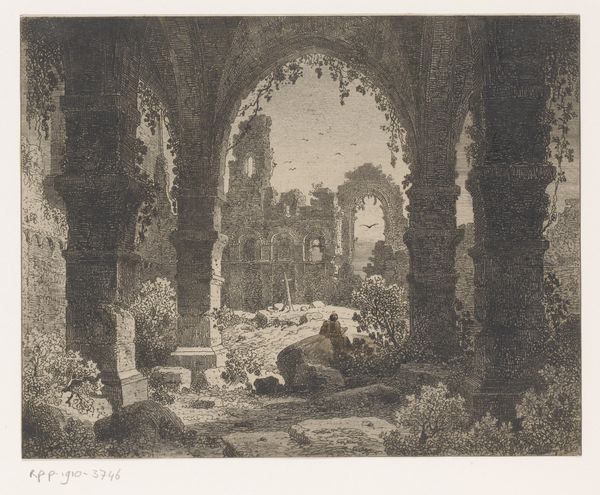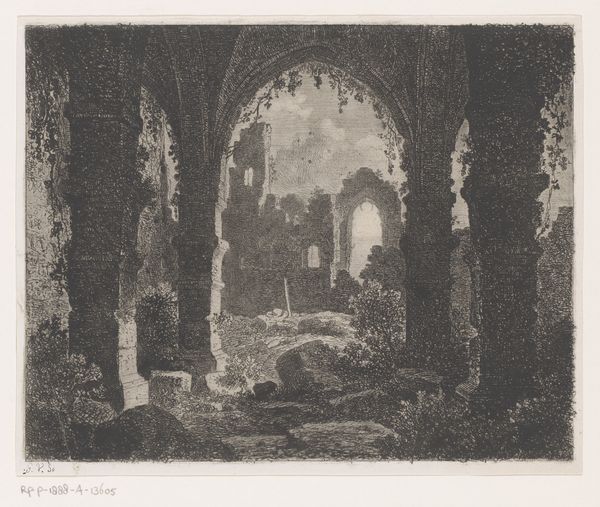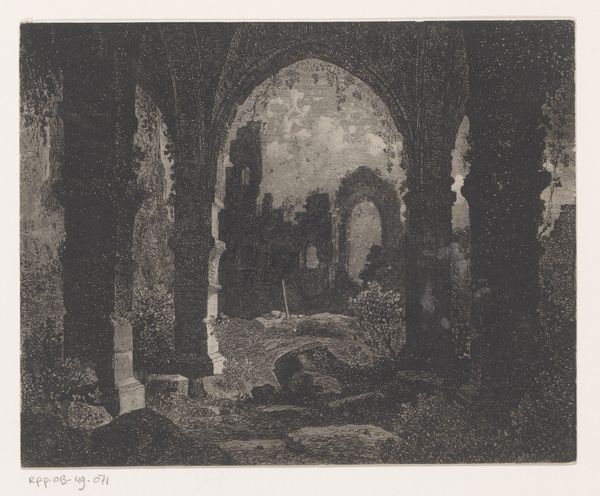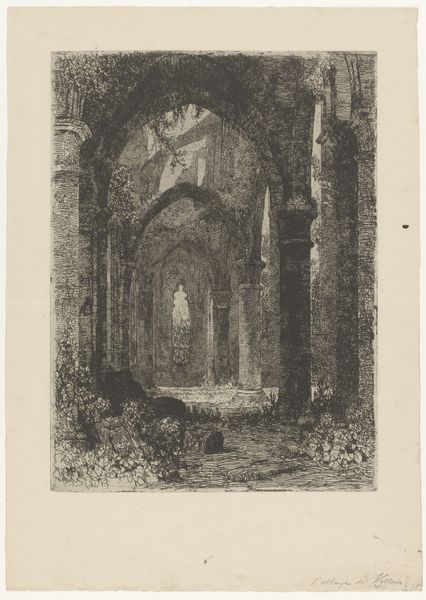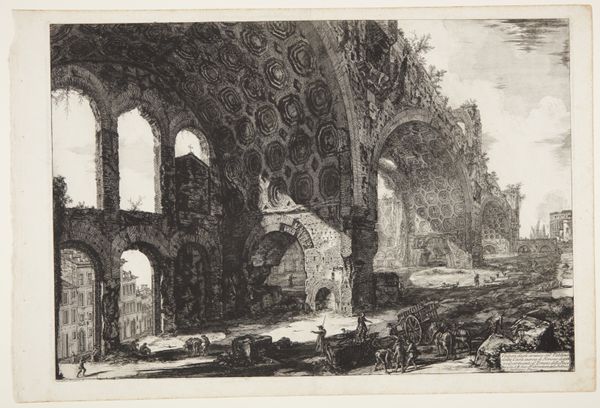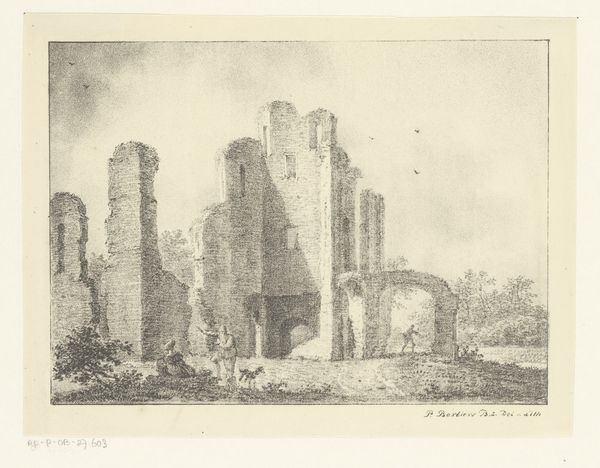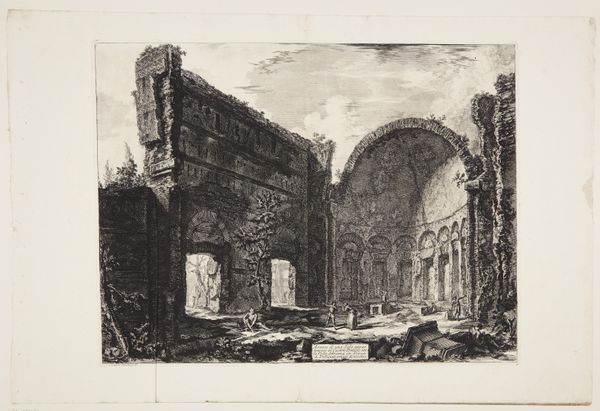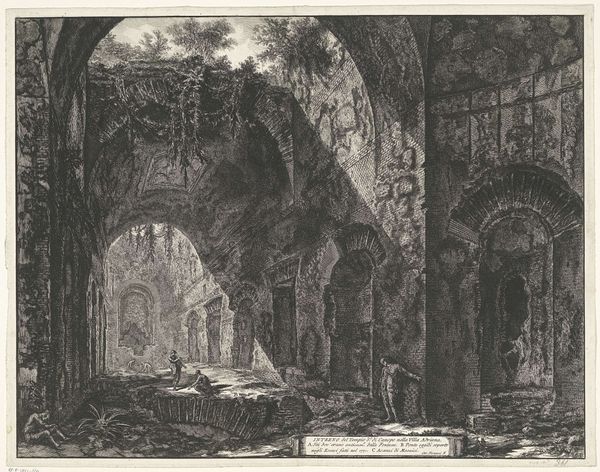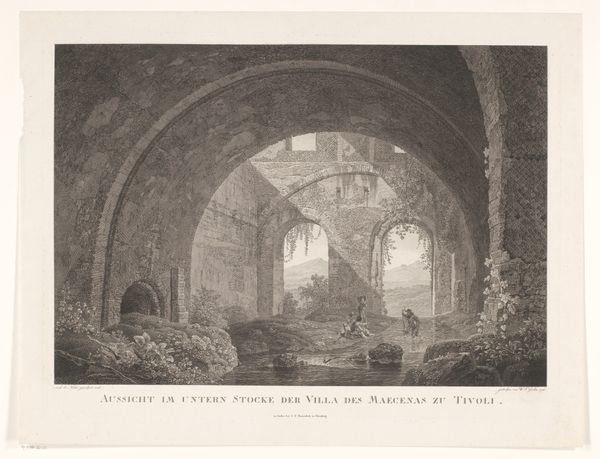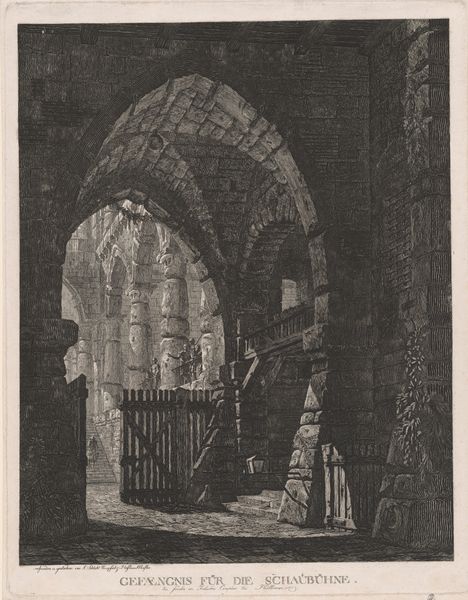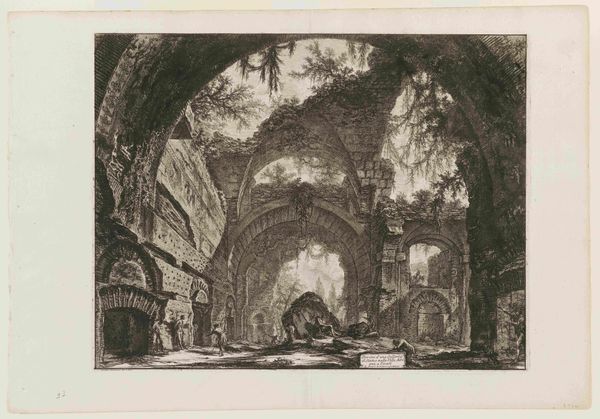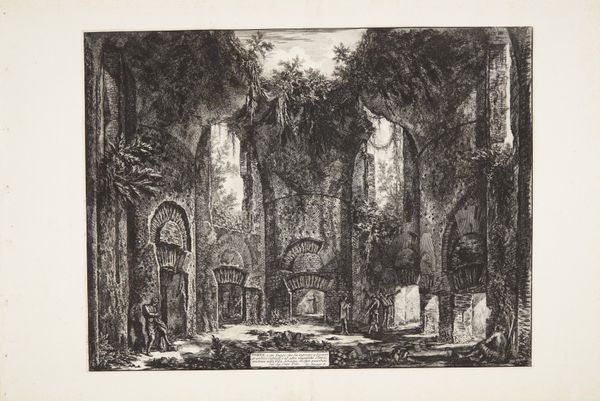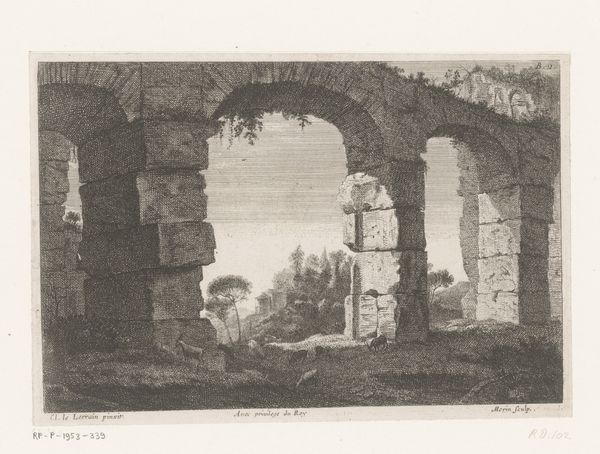
Dimensions: height 160 mm, width 202 mm
Copyright: Rijks Museum: Open Domain
Editor: This etching, "Gezicht op de ruïne van kasteel Kenilworth" by Guillaume Van der Hecht, dating from 1827 to 1879, evokes a sense of melancholy. The ruin itself seems to be reclaiming its space, nature slowly but surely covering the stones. How do you interpret this work in relation to its historical context? Curator: The romantic ruin was a popular theme, wasn't it? However, this goes deeper than just an aesthetic appreciation. Consider Kenilworth Castle's history; it represents power, aristocracy, and ultimately, its decline. Van der Hecht, through the intimate, reproducible medium of the etching, democratizes that fall. We must consider how visualizing decay in art serves as a mirror to societal anxieties around shifts in power, particularly concerning class and the legacies of colonialism, in a time of immense socio-political change across Europe. What emotions do the natural elements intertwined with the architecture provoke in you? Editor: I find a sense of inevitability. Nature seems to be indifferent to human ambition, almost erasing it. Curator: Precisely. It speaks volumes about the impermanence of power structures. Romanticism was not just about beauty, it was about engaging with power, history, and even trauma. How do you see the contrast between the strength of the stone and the softness of the foliage? Editor: The contrast highlights the power of nature but also makes the ruin appear beautiful. There’s something poetic about its decay. It forces us to reckon with change. I now see that it's more than a pretty picture, it's a statement. Curator: Indeed! These artists challenge us to question who gets to write history, and what perspectives are centered. They remind us of the layers beneath our present.
Comments
No comments
Be the first to comment and join the conversation on the ultimate creative platform.
